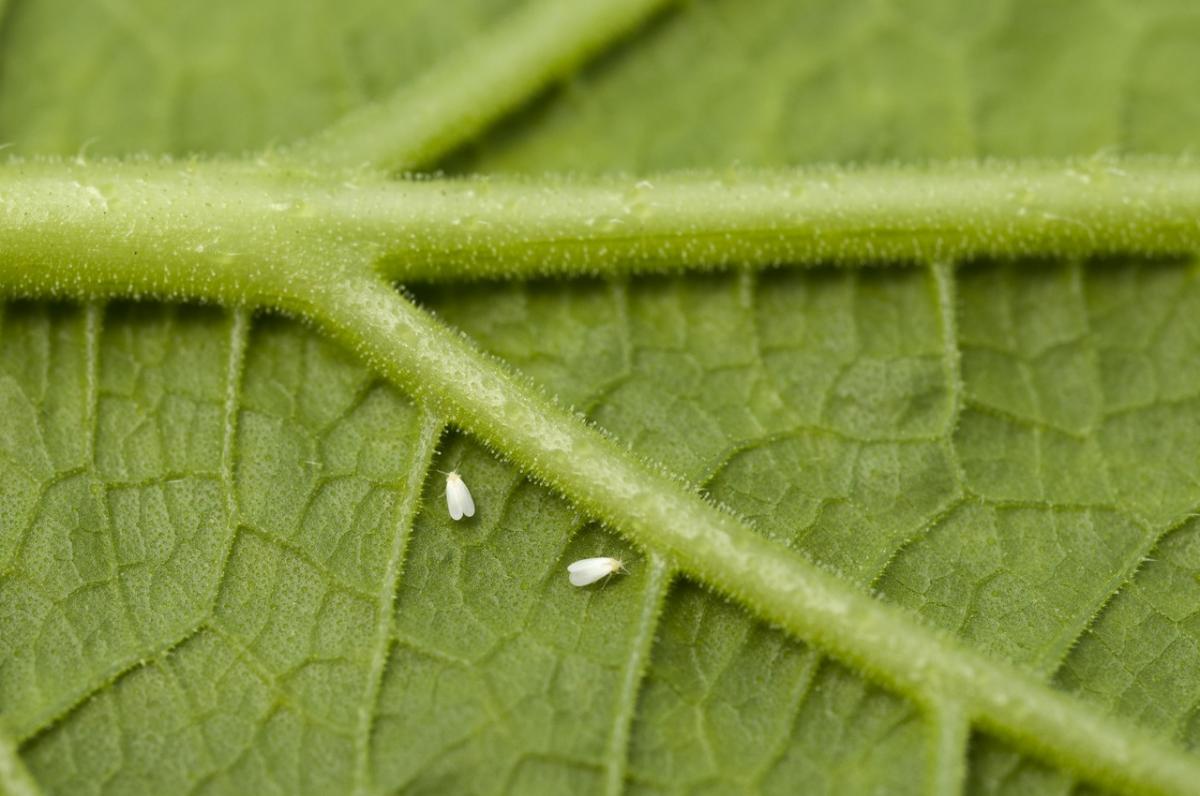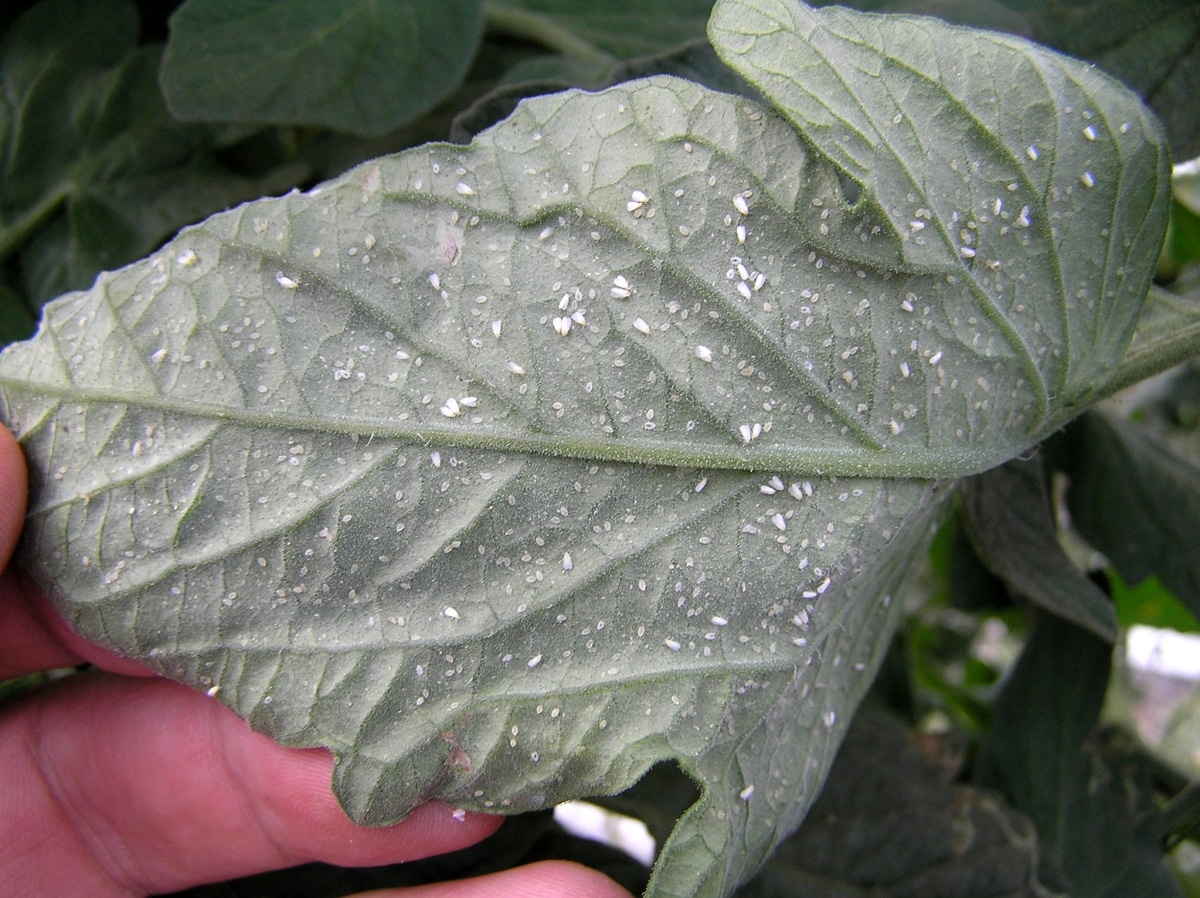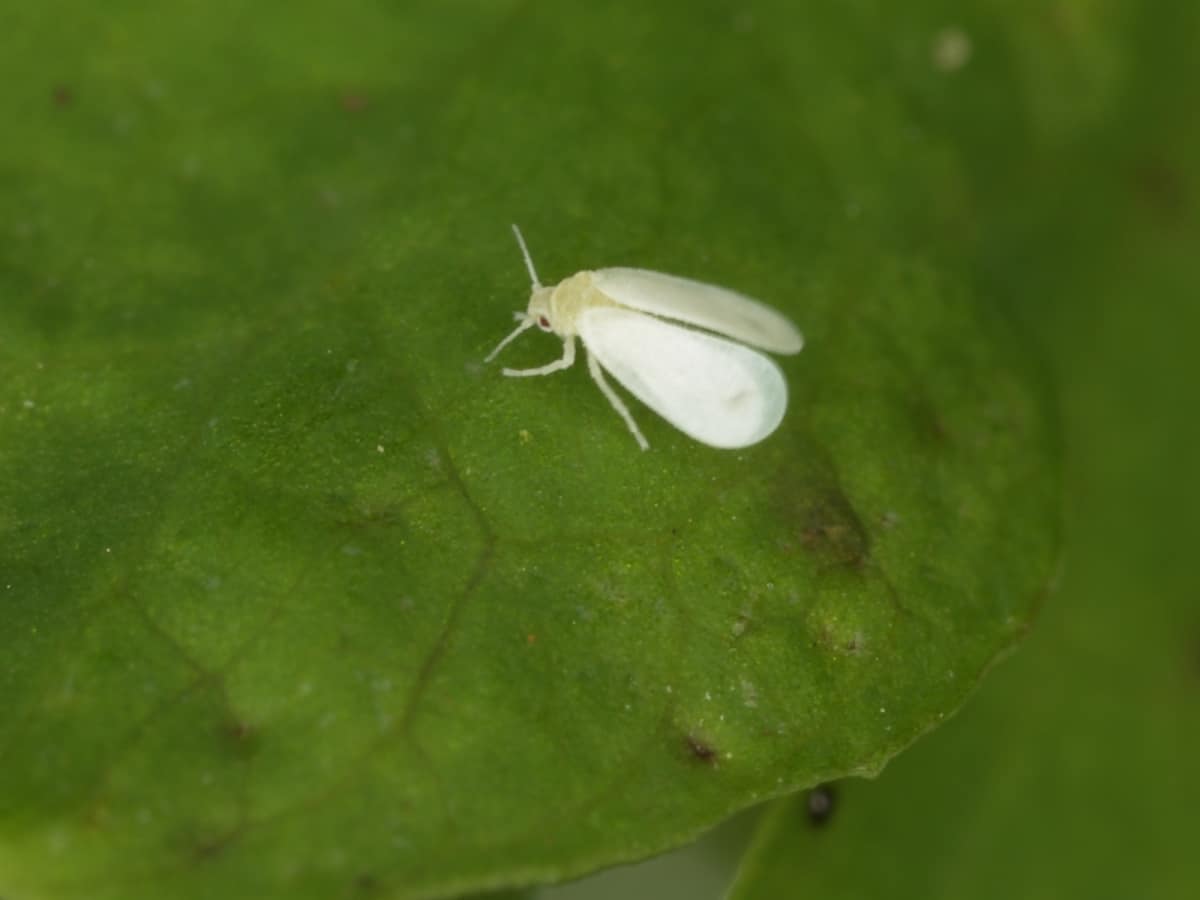
Image - Wikimedia / Pablo Oliveri
The whitefly is a small but dangerous parasite. It can weaken the plants if we do not take measures in time, and that is not to mention that it makes its leaves not look pretty. It covers the surface of them, and that reduces the ability to photosynthesize. Although it is difficult to end them, it is highly recommended to do everything in our power to protect our crops, and if necessary, act to eliminate the plague.
For this reason, I am going to explain everything about this parasite, and I will also tell you what are the best home remedies against whitefly.
What are the damages it causes?

Image - Flickr / Scot Nelson
The whitefly is a parasite that sucks the sap from plant leaves; that is to say, it rests on the pores, near the nerves of the same, to feed. At the beginning its population is very small, of a few individuals, so that the damages can go unnoticed. But it multiplies quickly, so the leaves are soon ugly.
But behind that loss of ornamental value there are other symptoms that should put us on alert, such as the following:
- Stunted growth
- Wilting of the leaves
- General weakening
- Appearance of other pests and diseases, such as bold
Sometimes We could also see that it blooms even though it is not its time, in an attempt to produce fruit with seeds; that is, in an attempt to propagate their species.
To this must be added that secretes a molasses which makes photosynthesis even more difficult as it covers the pores more. As if that were not enough, this substance attracts ants, aphids and the aforementioned bold mushroom.
How to eliminate whitefly with homemade and / or organic products?
The whitefly occurs on both sides of the leaves, and is usually accompanied by other pests like the mealybug. For this reason, it is highly recommended to use home remedies that serve, not only to combat whiteflies on plants, but also other possible enemies that they may have. In ecological gardening there are several remedies that we can do at home, and that will help us regain the health of our pots or our garden, such as:
- Garlic: crush about three cloves of garlic and add them to a liter of water to pulverize all the parts of the affected plant.
- Basil: This precious plant repels whiteflies like no other. Plant several in your garden and say goodbye to this pest!
- Chromatic trap- Many insects are attracted to a specific color. In the case of the plague that concerns us, it is yellow. To make a trap, you just have to buy a cardboard or plastic of this color and, to make them stick, we can use honey or oil. If you prefer not to complicate yourself, you can buy the chromatic trap from here.
There are also other remedies that, although they are not homemade, being ecological I would like to recommend you:
- Potassium soapBy diluting it in water, it will suffocate these pesky parasites in seconds, without damaging your flowers at all. You can get potassium soap at the best price from here.
- Neem oil: You will find this product for sale in stores and garden centers. It is a very powerful natural insecticide that will fight the most frequent pests. You can buy Neem oil at this link.
In addition, diatomaceous earth will also serve you (for sale here«). A very effective natural product that will also serve to fertilize plants. Discover in this video how it is applied:
What favors the whitefly? Let's talk about your life cycle
The whitefly is a parasite whose scientific name is Trialeurodes vaporariorum. It is active when temperatures are high, which is why it is a pest that is also found in greenhouses.
Once adult, they are 1-2 millimeters long, with white wings and yellowish bodies. It is native to the hot regions of the world, and its biological cycle goes through three phases:
- Egg: It is pale yellow at first, but then turns greenish. It is deposited on the underside of the leaves.
- Larva: passes through four larval stages. In the first two it is yellowish in color and has a tiny body. At the end of the quarter it increases in size, its body widens and becomes somewhat more visible.
- Adult: in this phase it already has the final size, and the wings. Females mature very quickly, since if the right conditions are met they can copulate in about 24 hours after reaching adulthood.
What plants does it affect?

Image - Wikimedia / gbohne
Actually, can affect anyone, but it is usually seen more in garden plants: pumpkins, tomatoes, potatoes. What I do want to say is also that depending on the climatic conditions and the health of the plants themselves, the whitefly may or may not affect them.
For example, those in my garden, on the island of Mallorca where the climate is typically Mediterranean, tend to have more problems with mealybugs and aphids, and not so much with the plague we are talking about. In any case, having them well cared for will help prevent serious damage.
Do you know other remedies to combat whitefly?



Regarding basil, on other websites, I have seen comments that say that the whitefly is usually also in the leaves of the basil, I do not know how true that is.
Now, neem in a certain way is also not beneficial because it repels not only the whitefly, it also repels other pollinating insects according to what some professors at the university where I study have told me.
Hi Edwin.
The whitefly affects many plants, including basil.
Neem oil is a natural insecticide that is used to combat this and other pests. But the truth is that I do not know if it repels pollinating insects.
A greeting.
Gee, I have used soap, garlic, vinegar, chamomile and even colored cloves…. they leave but after a few days they return. They have me desperate
Hello, Elizabeth.
Try to use diatomaceous earth. You throw it over the plant and that's it.
Regards!